
Exhibition:
Der 1. Mai–Demonstration. Tradition. Repräsentation
Österreichisches Museum für Volkskunde, Vienna
April 30–September 12, 2010
Catalogue:
. . . acht Stunden aber wollen wir Mensch sein: Der 1. Mai: Geschichte und Geschichten
Edited by Wolfgang Maderthaner and Michaela Maier
Vienna: Edition Rot, 2010.
285 pp.; illustrated throughout.
Cloth €49.90
ISBN: 9783901485985
May Day celebrations are usually related to bombastic spectacles that were organized by the communist regimes in Europe before 1989, as well as in other communistic countries around the world (Cuba, China, Vietnam, North Korea). Their official purpose was to celebrate International Workers’ Day and promote the regime using the most elementary strategies of propaganda–parades, speeches, pamphlets, songs, and so on. Groups of employees and members of socialist organizations, dressed in their work uniforms or Sunday best, participated in the marches to manifest their belief in the unity of the proletariat. The celebrations always had a strong visual aspect which included the use of floats, flags, banners, or flowers, sending clear messages about the Communist Party, the power of the working classes, plans for the future, and world peace. The parades were watched by spectators in the streets, as well as in live broadcasts on radio and television, and overseen by political leaders in situ.
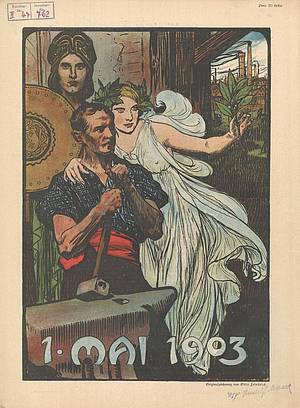
These marches, however, are only one of the many manifestations that May Day celebrations have adopted. There are many other May Days around the world, some with a link to the idea of celebrating labor, some without. The origins of the socialist celebrations are usually found in the Chicago massacre of 1886, in which a large number of participants in a strike for an eight-hour workday were killed when a bomb was thrown and police opened fire on demonstrators, leading to subsequent riots, a trial, and several executions. These events, however, started on May 4, and it was not until 1889 and the first congress of the Second International in Paris that May 1st was established as a commemorative day of the international labor movement and a remembrance of the Chicago events.
Prior to the socialist May Day, other traditions and customs were observed on this day. In earlier pagan societies, May 1st (or thereabouts) was an important day of renewal and the rebirth of nature after winter. In numerous countries all over the world, May 1st is related to various regional customs, such as raising a maypole, lighting bonfires, dancing, and singing. Christianity introduced its own celebrations of the First of May, which was related to the saints Philip and James, while the Roman Catholic Church specifically consecrated the whole month of May to the Virgin Mary.
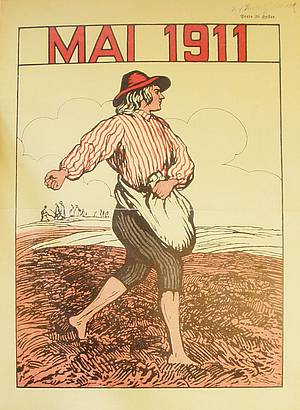
All these alternative traditions stood at the birth of May Day as the International Labor Day, under the patronage of the socialist left. Such elisions and overlaps were well demonstrated at the exhibition Der 1. Mai–Demonstration. Tradition. Repräsentation (May 1st–Demonstration. Tradition. Representation), held at the Österreichisches Museum für Volkskunde (Austrian Museum for Folk Life and Folk Art) in Vienna between April and September 2010. The venue, which normally concentrates on folk art and indeed holds a rich collection of folk artifacts, opened the exhibition to mark the 120th anniversary of the first May Day parade of 1890 in Vienna.
In Austria, and especially in the capital, Vienna, May Day has a lasting tradition of being celebrated by the socialist left, historically related to the Social Democratic Party (Sozialdemokratische Partei Österreichs). The exhibition shows the “transformations and continuity” of the symbolism of May Day, both ideological and visual, in Vienna and beyond.1 Starting from the early days in the late nineteenth century, when the working classes were first mobilized, the history of May Day examines the changing political climate particularly in Central Europe–the period of Red Vienna (c. 1919–34, when Austria was governed by the Socialist Democratic Party), the adoption of the holiday by the national socialists during World War II, the Cold War celebrations and their counterparts in Austria, and finally the contemporary EuroMayDay. In this latest incarnation, May Day stands for a holiday of the modern migrant workers of Europe, still organized by the left, who, from their website, call for “no borders, no workfare, and no precarity!”2
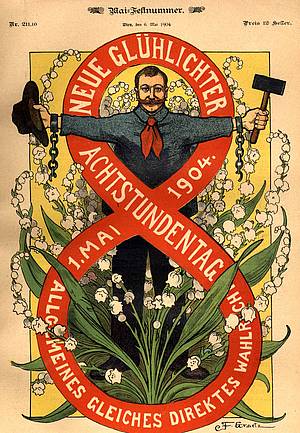
The show, however, was not organized primarily as a historical survey, but rather as an overview of the various visual, textual, and material cultures that can be related to these different forms of May Day. The introduction to the exhibition is provided by a collection of photographs from contemporary demonstrations held in Berlin, Havana, and Istanbul. Historical documents were not amiss, though, with a substantial display of newspaper articles, celebratory poems, transcriptions of speeches, and commemorative publications.
Most interesting, however, was the visual material that had been gathered here. In general, the photographs, films, posters, magazine covers, stickers, badges, and banners show the richness of the mostly visual culture related to May Day celebrations and demonstrate the predominant iconology. The color red is present everywhere, naturally, and so are flowers, symbols of manual labor (such as the hammer and the sickle), garlands, and flags.
The displayed images had also another dimension–they served as documents reflecting the period in which they originated. The early representations of May Day celebrations, as shown for instance on the covers of the satirical magazine Glühlichter or the annual commemorative publication Maifestschrift, demonstrate the close relation to the folk and religious traditions of observing this holiday, and include rich floral decoration, depictions of processions of people in folk costumes, and “revelations” of symbolic figures to the working men and women. Some also make direct references to the French Revolution by employing the Symbol of Liberty in the Phrygian cap.
The images of early peaceful processions in the Viennese Prater are contrasted with the large gatherings during the Nazi regime in Austria. The emphasis on the visual spectacle of the fascists is evident from the photographs and films showing rows of maypoles with ribbons and flags topped off by the common Nazi symbols, or flanked by participants in folk costumes. This was an effective piece of appropriation on the part of the Austrian Nazi Party because they maintained the passive appeal of the holiday and the spectacle, merely renaming it the “Festival of the Austro-Fascist Constitution” (Festtag der austrofaschistischen Verfassung) and later the “Holiday of the German People” (Feiertag des Deutschen Volkes). The Nazis’ use of the folk heritage of the Aryan peoples is well known, leading as it did to the massive “Strength through Joy” organizations (Kraft durch Freude) throughout Central Europe. The materials on display represented this point well, showing almost casually the conscious attempt of propagandists to appeal to the working classes both from the cities and the villages.
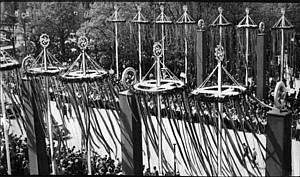
Apart from still and moving images, the exhibition also displayed a number of three-dimensional objects that further emphasized the transmission of imagery and ideas across different media. Of this category, the selection of badges and pins from 1890 until today are perhaps the most interesting. In Austria, every year a new design appeared for participants to wear in the parade. Most of them are directly linked to the Social Democratic Party, showing the party’s name or its symbol of a red rose. Other typical attributes of May Day–such as a worker, a flag, or symbols of work dominated by the almost obligatory red color–also appear frequently on the small space of the pins, made from metal or plastic.
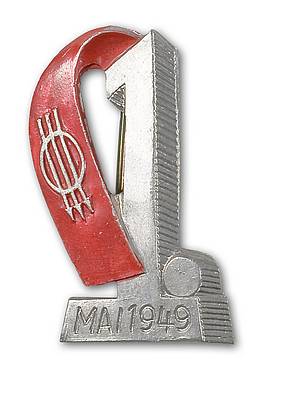
The pins as well as most of the other material show May Day’s image in Austria alone. Apart from a few excerpts of propaganda footage, photographs, and television coverage of May Day celebrations in communist countries during the Cold War, the exhibition is almost exclusively about the Austrian context. The curators, it seems, decided to concentrate on the local history of this international event, perhaps following Engels’s statement that “on the continent, it was Austria, and in Austria, Vienna, which celebrated this festival in the most splendid and appropriate manner.”3 This local focus is felt also in the fact that all descriptions of the exhibited artifacts are presented in German, as is the newspaper-like publication accompanying the exhibition. One cannot help thinking that by not providing information in English, the organizers deprived themselves of the international audience that such an exhibition could attract.
Still, the curators managed to suggest the various demonstrations, traditions, and representations of the May Day celebrations in a particular place–Vienna (and Austria). Using powerful visual material, both two- and three-dimensional, they showed the many forms that May Day can take: religious holiday, folk custom, political event, and, in most of these cases, a tool of propaganda.
Marta Filipova is based in the United Kingdom and researches modern art in Central Europe and the questions of national identity in art and design.
- 1. Kathrin Pallestrang, “Hintergrundmaterial zur Sonderausstellung der 1. Mai – Demonstration: Tradition Repräsentation,” http://www.volkskundemuseum.at/uploads/pdf/Presse/Textauszug_DER_1._MAI.pdf (accessed September 20, 2010).
- 2. See www.euromayday.org.
- 3. Friedrich Engels and Karl Marx, Werke, vol. 22 (Berlin: Dietz, 1963), 60.
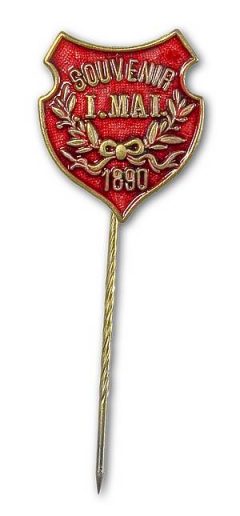
Abzeichen zur Maifeier 1890 © VGA.
